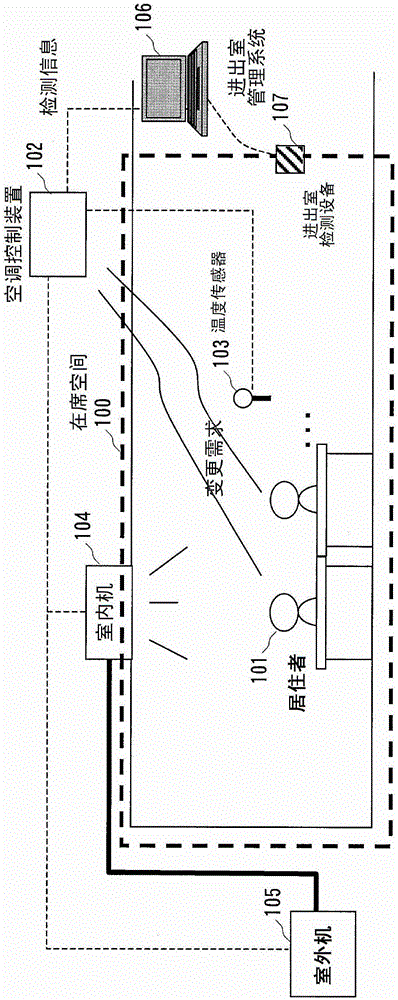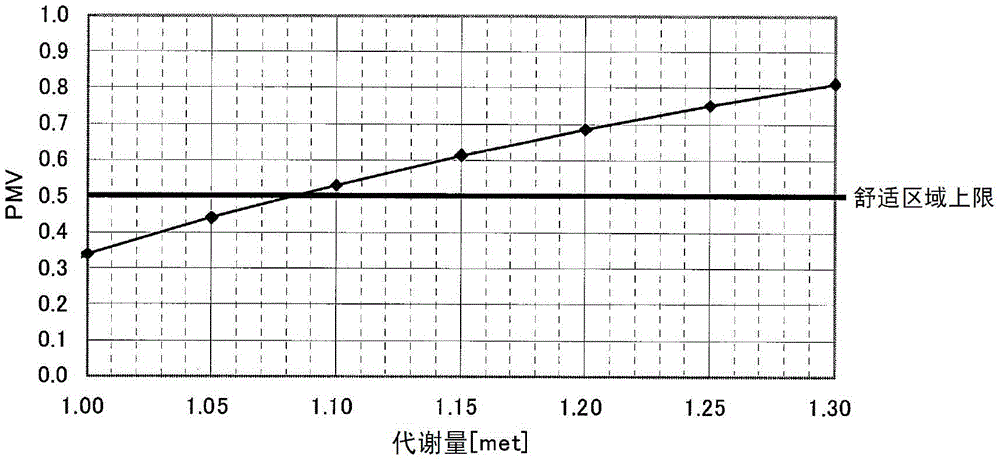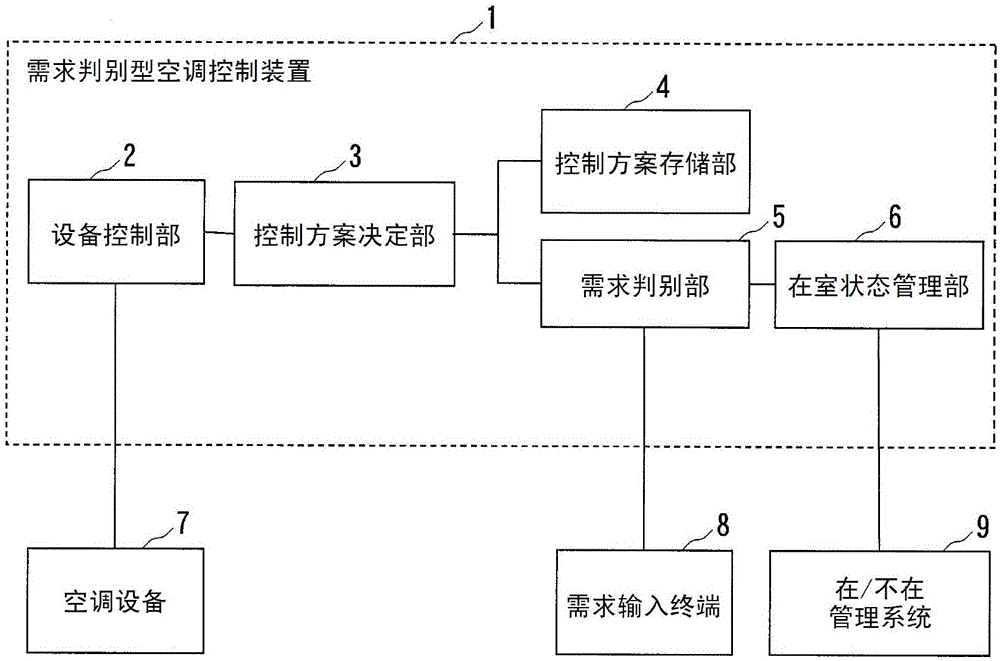Demand discrimination device and discrimination method, air conditioning control system and control method
A technology for discriminating devices and methods, applied in heating and ventilation control systems, temperature control using digital devices, space heating and ventilation control input, etc., can solve the problem of increased dissatisfaction in air conditioning control systems, cumbersome declaration operations, etc. problem, to achieve the effect of reducing instability, reducing burden, and reducing possibility
- Summary
- Abstract
- Description
- Claims
- Application Information
AI Technical Summary
Problems solved by technology
Method used
Image
Examples
no. 1 Embodiment approach ]
[0054] Hereinafter, embodiments of the present invention will be described with reference to the drawings. In this embodiment, whether or not the demand is a temporary demand is discriminated from the occupancy duration calculated by using the notification occurrence time and occupancy information of the notifier, and an air-conditioning control plan is determined based on the determination result. Here, the so-called control plan refers to a rule for determining and changing the control set value of the air conditioner according to demand.
[0055] In the present invention, the occupant, the occupant's seated space, and the air-conditioned area corresponding to the seated space (the air-conditioned area consistent with the seated space, the air-conditioned area included in the seated space, or the air-conditioned area included in the seated space) The information corresponding to the air-conditioning equipment to be controlled in the air-conditioning area of the space) is h...
no. 2 Embodiment approach
[0126] Next, a second embodiment of the present invention will be described. In the present embodiment, it is determined whether or not the demand is a temporary demand by using the equivalent time in the room in consideration of the short-term absence of the notifier, and the control plan of the air conditioner is determined based on the determination result.
[0127] In the first embodiment, the time the occupant continues to be in the presence space is accumulated and set as the occupancy duration Hcs, and when the occupant exits the occupancy space, the occupancy duration Hcs is set to 0, and the occupant When the person returns to the seat space (in the case of re-entry), the presence duration Hcs is accumulated again from 0.
[0128] However, when the seat space is a narrow area, for example, when the seat space is a section of a wide floor such as an air-conditioning area (control unit of the air conditioner) or an area around the seat, even the occupants of the office ...
no. 3 Embodiment approach
[0195] Next, a third embodiment of the present invention will be described. This embodiment provides a method of reducing the burden of calculation of the corresponding room time in the second embodiment. In the present embodiment, the structure and processing flow of the demand-discriminating air-conditioning control device are the same as those in the second embodiment, and only the operation of the occupancy state management unit 6a is different, so the Figure 12 symbols are explained.
[0196] In the present embodiment, the corresponding time in room is added to the presence history information managed by the presence state management unit 6a, and the calculated value of the corresponding time in room is held every time the presence history information is updated. Thereby, it is possible to avoid repeated calculation of the equivalent time in the room when the presence information is transmitted, and by reducing the calculation load, the calculation speed can be increase...
PUM
 Login to View More
Login to View More Abstract
Description
Claims
Application Information
 Login to View More
Login to View More - R&D
- Intellectual Property
- Life Sciences
- Materials
- Tech Scout
- Unparalleled Data Quality
- Higher Quality Content
- 60% Fewer Hallucinations
Browse by: Latest US Patents, China's latest patents, Technical Efficacy Thesaurus, Application Domain, Technology Topic, Popular Technical Reports.
© 2025 PatSnap. All rights reserved.Legal|Privacy policy|Modern Slavery Act Transparency Statement|Sitemap|About US| Contact US: help@patsnap.com



